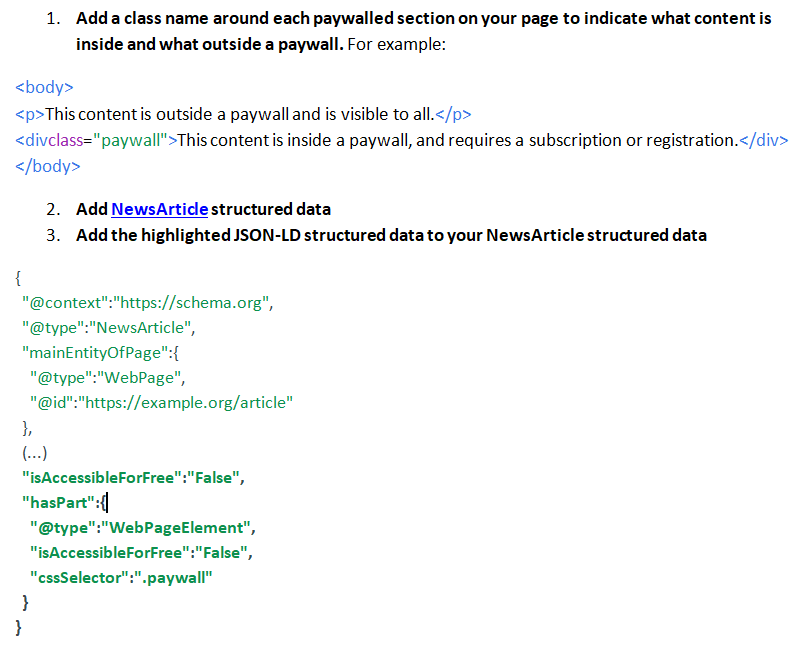

Developing a winning SEO strategy has always been subject to debate.
While most SEO professional agree on the key factors to organic rankings as being good content, solid website architecture and strong backlinks, the prioritization and execution of these factors can and does vary widely. This is in no small part due to Google’s non-transparent algorithm and endless core updates.
At the most basic level, the purpose of SEO is to make your website rank as high as possible in organic search results. In other words, make your content more visible to users.
Now consider for a moment what would happen if you put an obstacle such as a paywall in front of a user who arrived at your page intending to read your content. This would seem to run counter-intuitive to providing a good user experience – but not necessarily.
Putting your content behind paywalls or gates does provide some benefits:
- One can get more information about users who access the content.
- Users who go through the effort to seek out content behind a paywall will often consider it more useful, trustworthy and valuable.
- Users who access gated content are often more likely to become a customer or client than others, who choose not to.
That being said, there are drawbacks to gating content. The biggest three are:
- You can count on a smaller audience, as users choose not to pass through the gate.
- It’s harder to earn links as users may not want to be seen as marketers for your content.
- There’s sometimes a negative reaction by users who get stopped by a paywall or gated content, as they have become accustomed to receiving and consuming content freely.

What Does Google Have to Say About Paywalled Content?
Regardless of whether your content is free or premium, you have to follow Google’s guidelines.
The biggest problem for premium content owners is how to be visible in search if their content is not freely available to all users.
To mitigate this, Google initially introduced a First Click Free (FCF) policy. What that meant was that in addition to their premium content, publishers had to provide some free content that users could access through Google search.
Suffice it to say that publishers weren’t the biggest fans of this model and it was discontinued in 2017 in favor of a new one, more aptly called “Flexible Sampling”.
Basically, the new model gives publishers more maneuvering space in deciding how much of their content they want to provide freely to users and how they want to provide it.
There are three options that publishers can choose from in Flexible Sampling:
Lead-in
With this option, the reader gets a portion or a snippet of an entire article, while the rest remains hidden.
If the user wants to read the rest of the article, he or she has to pay a subscription fee. For example, The Wall Street Journal, The Economist and The Times all use this model.
Metered
In this case, the user can visit a limited number of articles (usually three) per month. After that, users are prompted to subscribe to the website.
Several websites, including The New York Times, New York Magazine’s Sites and Medium, use this method.
Hard Paywalls
With hard paywalls, all content is gated off. Gated content doesn’t get crawled or indexed by search engines.
That means there is no chance of a gated website’s content appearing organically in search results.
So Which of the Three Is the Best Option?
This largely depends on the purpose of your content.
News platforms, such as the New York Times, have had good success with metered content. This model allows visitors to get a good idea of the quality of their content, by providing full samples as “teasers” to entice users to subscribe.
As of November 2018, seven and one-half years into the metered subscription experiment, the “failing” NY Times reportedly has more than 2.5 million digital news subscribers.
That said, lead-in content also has its place. If your premium content revolves more around industry studies, charts, statistics and data in general, you may do better with lead-ins rather than metered content. You can present a problem in front of the paywall and offer to solve it on the other side.
Hard paywalls and SEO don’t mix ~ this is not an option.
Balancing Free & Premium Content
Free content has a clear advantage over premium content when it comes to organic search, due to its sheer volume. This doesn’t mean that premium content publishers will be devoid of organic search opportunities.
In fact, one could argue that engaging in SEO is MORE important for subscription sites, as they have an extra hurdle (paywall) to clear.
Premium content publishers actually have two good options.
- They can seek to find a balance between free and premium content like the New York Times does.
- Or they can create content that readers are searching for, but can’t get anywhere else. This content essentially needs to be exclusive.
In other words, one can’t put just any type of content behind a paywall.
Basic articles such as “How to Optimize Your Website for SEO” number in the thousands (millions?) on the web and be found with a quick Google search for free. Users have no reason or motivation to pay for that kind of content.
On the other hand, if a publisher puts considerable effort into discovering a need and then creating a solution in the form of a whitepaper, ebook, or in-depth article, they can justify putting their specialized content behind a paywall. If the content is authored by a renowned expert, so much the better.
In deciding whether to gate content or not, it may be a good idea to consider the following three questions:
What Is the End Game?
Are you looking to increase subscribers or generate leads? If so, then content should probably be gated in some way.
However, if you are looking to generate more visitors and links, the gating approach will be counterproductive.
Is the Content Worth Paying For?
Put yourself in the user’s shoes and answer this question: “Is this content valuable enough for me to pay for it or fill out a form?”
Be careful when answering this question. As the creator or curator of content, pride of authorship can make it difficult to be truly unbiased.
Is the Data Collected Worthwhile?
Another consideration when it comes to content gating is how it impacts the user experience. The rise in the use of pop-ups and overlays is directly responsible for the increase in ad blocking software.
By forcing users to turn over personal information to access gated content, a (sometimes large) percentage of data collected consists of fake names and burner email accounts.
The ‘Fred’ Update & the Difference Between Premium & Cloaked Content
In March 2017, Google introduced an algorithm update that was dubbed Fred.
The basic idea was to reward websites that provided positive user experience and to demote websites light on quality content and heavy on ads.
Fred also had the unintended consequence of demoting some legitimate paywall websites.
Technical SEO Considerations for Paywalled Content
One initial problem with Fred was that it had difficulty in differentiating between paywalled and hidden (cloaked) content. Since then, Google has come up with a solution: structured data.
In order for paywalled content to be eligible to appear in Google search results, it needs to follow the Structured and Technical Guidelines.
JSON-LD and microdata formats are accepted methods for specifying structured data for paywalled content.
Don’t nest content sections.
Only use .class selectors for the cssSelector property.
Here is an example of how to indicate paywalled content to comply with Google’s guidelines:

One more important point; clever searchers have learned that paywalls can be bypassed by going into the Google cache and reading content for free.
To prevent this, one needs to use the noarchive robots meta tag, which will stop Google from showing the cached link to that page.
Conclusion
Should your content be behind a paywall? As we’ve seen, there are a number of factors to consider.
Most importantly, does a paywall or subscription provide value? Enough value for users to justify payment? Or can users access the same type of content elsewhere, for free, on the Internet?
If your premium content is truly unique and not available elsewhere online, a paywall can be a good idea.
You just have to contend with the fact that you may have a smaller audience. But the upside is those who do subscribe, will often be more loyal, will tell you more about themselves by filling out forms, and will provide more value by paying for the content.
[“source=searchenginejournal”]

